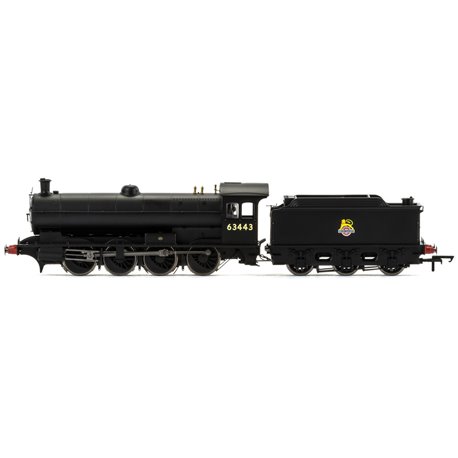No products
Product successfully added to your shopping cart
There are 0 items in your cart. There is 1 item in your cart.
Christmas and New Year
We are dispatching orders every weekday apart from Christmas Day, Boxing Day and New Year's Day.
If you order is time critical, select next day delivery at checkout.
The shop in Sandown is closed from 25th December, reopening on 30th December.
BR 0-8-0 Raven Q6 Class - BR Early
R3425
Hornby
BR 0-8-0 Raven Q6 Class - BR Early
This product is out of stock
| Scale | OO (1/76) |
More info
BR 0-8-0 Raven Q6 Class - BR Early
- DCC Type DCC Ready
- Livery/owner Early BR
- Class Q6
- Designer Vincent Raven
- Entered Service 1910s
- Age Suitability 14+
- Purpose Heavy Freight
- Wheel Configuration 0-8-0
At the end of the first decade of the 20th century, the upsurge in the growth of mineral traffic in the North-East exceeded the amount of steam haulage available to transport it. The existing North Eastern Q5 locomotives, designed by Wilson Worsdell, were extremely capable engines but the new Chief Mechanical Officer, Vincent Raven, felt a more powerful, superheated design would be justified in the circumstances.
Between February 1913 and March 1921, 120 examples of Raven’s new T2 eight-coupled locomotive were built, in six batches, resulting in a powerful, sturdy and reliable engine design that fulfilled its requirement to haul mineral and heavy freight traffic, right through to late 1967. The first seventy were built at Darlington, with the last batch of fifty being constructed by Armstrong Whitworth & Co. of Newcastle. The class was not intended for passenger traffic and was therefore purely equipped with steam braking for bother engine and tender, five different types of which were used with the locomotive which ranged from the early 3,940 gallon tenders to the later 4,125 self-trimming type.
When the NER was absorbed into the LNER at Grouping in 1923, the locomotive class was designated as Q6 and they operated from sheds across the North-East of the territory, from Humberside to Tyneside and across Northumberland into Cumbria, even making it into Scotland during 1923. Although the class remained visually similar during its lifetime, subtle differences arose when the boilers were updated, starting between 1927-29. Identified by the boiler dome being placed just over a foot further back towards the cab, with a flatter aspect, in due course all the engines were fitted with these new Diagram 50A boilers. Other detail differences were evolutionary, rather than revolutionary, with items such as smokebox doors, chimneys and buffers changing form, whilst the introduction of positive drive led to changes in the position of the lubricators.
At Nationalisation in 1948, all 120 engines were taken on by British Rail, their numbers being placed in the 60xxx range and the process was completed by June 1951. The first withdrawal from service came in May 1960 and this only arose due to an accident, it was to be December 1961 before the next occurred and it wasn’t until April 1963 that withdrawal started in earnest. A single Q6 has been preserved, saved by the North Eastern Locomotive Preservation Group and housed at the North York Moors Railway, which is Locomotive No.2238.
The following are likely to be the locomotives modelled, but this is subject to confirmation by Nick. Locomotive No.3418 was the ninth of the Armstrong Whitworth locomotives to be built, entering traffic in February 1920 as NER 2261 and receiving the 50A Boiler on November 14, 1940. Initially allocated to Blaydon Shed, the locomotive moved to Borough Gardens on January 27, 1927, moving to Dairycoates in April 1939. The war years saw it moving around, spending spells at York and Neville Hill, before settling at Consett in June 1943. At the beginning of May 1962, now numbered 63418, the engine moved to Sunderland from where it was withdrawn and sent for scrapping at Darlington on August 6, 1963.







